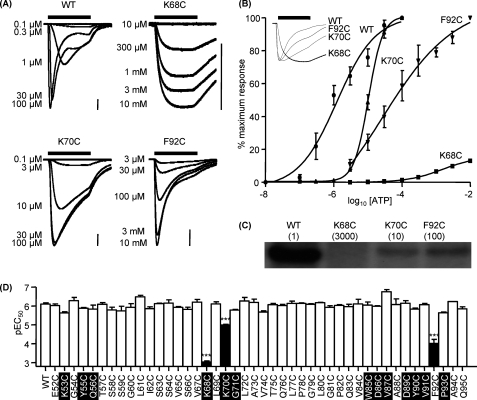FIGURE 1.
Effect of point cysteine mutations on ATP potency. Agonist action was tested on P2X1 WT and P2X1 receptor mutants expressed in oocytes by two-electrode voltage clamp (holding potential, −60 mV). A, concentration responses to ATP for oocytes expressing WT, K68C, K70C, and F92C mutant P2X1 receptors. ATP was applied for 3 s (indicated by the black bar; scale bar, 1 μA for all). B, summary of concentration response data for WT and mutants K68C, K70C, and F92C, which showed a significant decrease in ATP potency (n = 3–4). Error bars, S.E. The inset represents the slower response times of K68C, K70C, and F92C compared with WT in response to a maximum concentration of ATP. C, autoradiograph depicting radiolabeled [32P]2-azido-ATP cross-linked to WT and mutant receptors (mean EC50 for ATP (in μm) is shown in parentheses). D, summary showing pEC50 values of all mutants compared with WT (left). Values are shown as means ± S.E. Significant differences from the wild type are indicated (***, p < 0.001). Conserved residues are highlighted in black.

